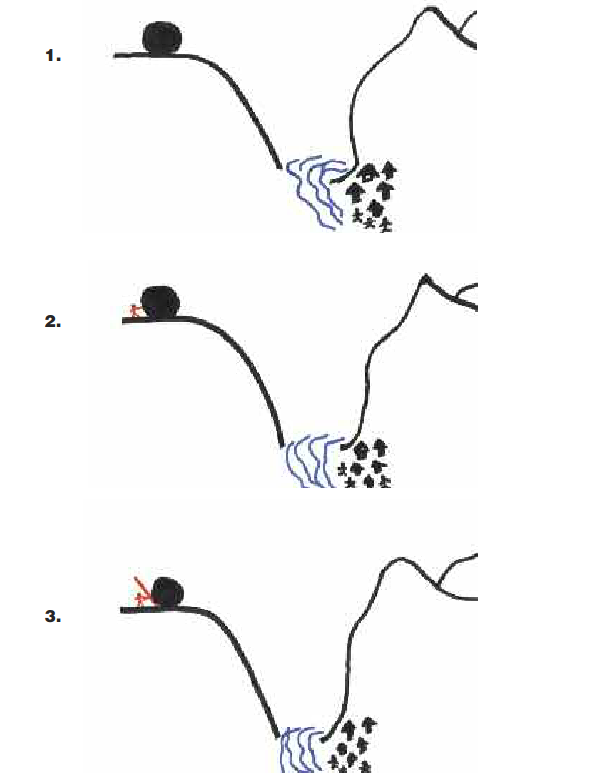|
OBJECTIVE |
To analyse risks and threats using a visual model |
|
TIMING |
90 minutes |
|
RESOURCES |
Earth to draw a picture on |
|
OPTIONAL RESOURCES |
Flip charts & marker pens |
Many rural communities are actively protecting their rights against threats and aggression. In some communities, neither the Risk Formula nor the Matrix may resonate with them because of the mathematical formats.
One way of discussing the components of risk analysis was devised by Lina Solano, an HRD in Ecuador – see visual below.
1. Draw a picture in the earth of two mountains with a river running between the mountains. On one bank of the river draw the community village. At the top of the opposite mountain is a big boulder.
Ask the community members:
Ask: What are the risks that might happen to the community and the village? What are the probability levels: low, medium or high? What are the impact levels: low, medium or high?
2. Add to the picture a person who is trying to push the big boulder down the mountain towards the village
Ask: What has changed in the probability and impact levels?
3. Add to the person’s hands a large stick which is used as a lever to tip the boulder down the mountain
Ask: What what has changed in the probability and impact levels?
Invite community members to add to the drawing possible solutions at different stages, and point out the vulnerabilities and capacities the community has in each solution. They may suggest responses such as:
- drag the boulder to a safer place
- plant trees or cactus to impede the progress of the boulder if it rolls down
- keep a lookout around the community for intruders – parrots can be trained to sound the alarm
- escape in canoes down the river
- relocate temporarily to a safer place
- go up the mountain, escort the man away or remove his stick
- call for assistance from neighbouring communities or organisations working on human rights
Discuss all the options and consider which may be most effective at different times.
Summarise the discussion.
After discussing this example, turn the discussion to the issues facing the community, and reflect them using the terminology of probability/impact and vulnerabilities/capacities.

